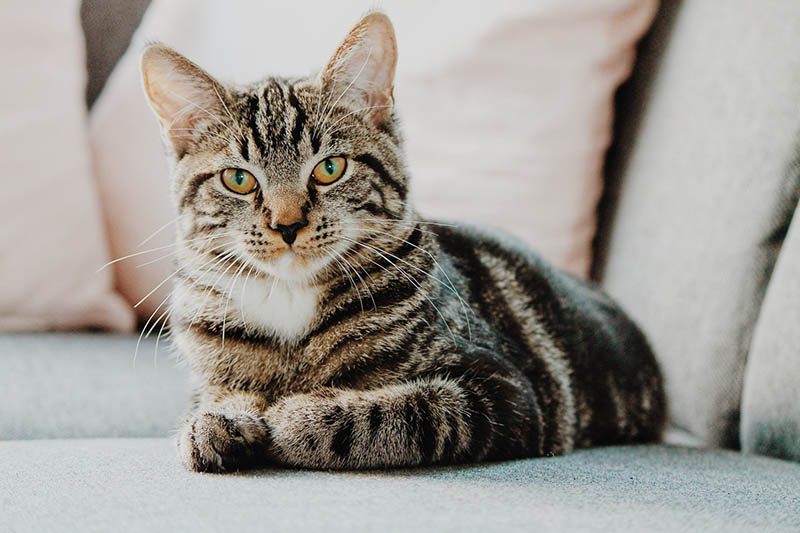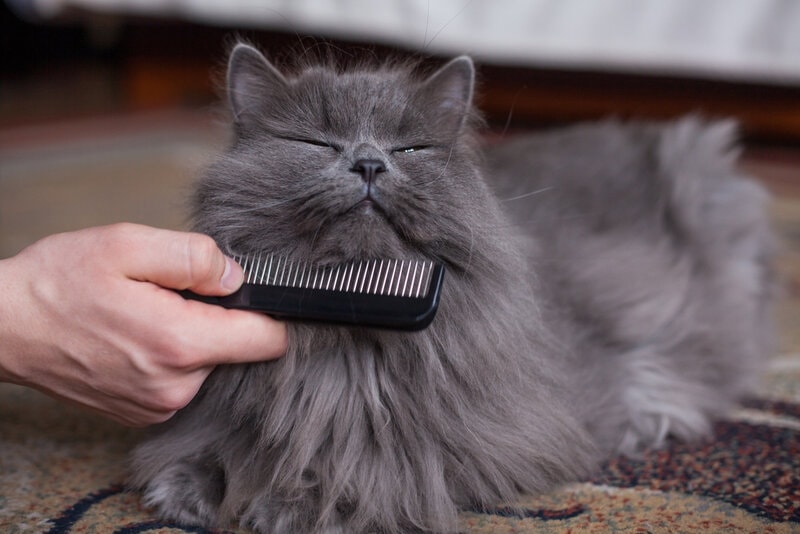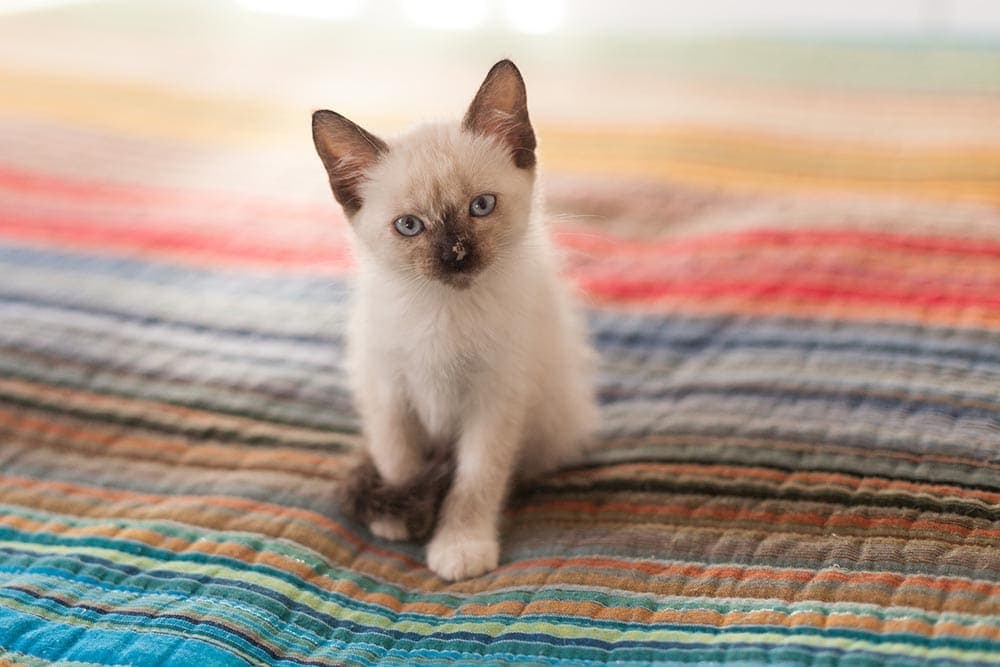11 Incredible White Cat Facts You’ll Be Surprised to Learn
Updated on
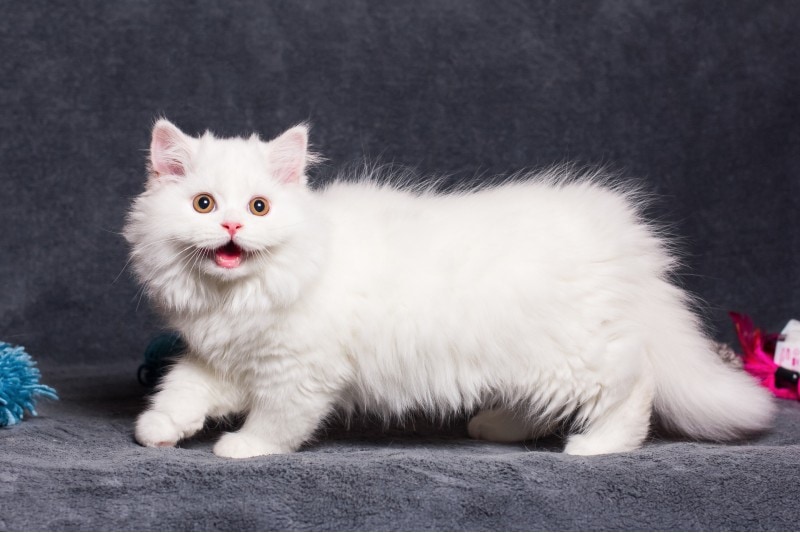
There’s no doubt that cats are amazing creatures, which is probably why they’re the 2nd most popular pet in the United States. They come in a wide variety of colors, including black, blue, chocolate, cream, red, and several more. There’s one color, though, that truly stands out in the cat community, and that’s white. Not surprisingly, white cats stand out among all the cat colors and are coveted by cat fanciers worldwide.
If you’re the lucky owner of a white cat, the 11 incredible facts about them below will be a true treat! Read on to discover them all and get a better appreciation of these beautiful white felines.

The 11 Incredible Facts About White Cats
1. Most White Cats With Two Blue Eyes Are Deaf
It’s estimated that around 80 to 85% of cats with white fur and two blue eyes are deaf. That’s because an autosomal dominant gene, commonly called the “W gene,” only affects white cats. The W gene has an interesting effect on cells called melanoblasts. Melanoblast cells produce melanin, the natural chemical that produces the color of a cat’s skin, hair, and eyes.
When a cat has the W gene, it causes a chemical imbalance that significantly reduces the production of melanin, which makes your cat white, gives it blue eyes, and, unfortunately, kills the tiny hairs in a cat’s ear that enable it to hear. If the W gene is recessive, the chance a cat will be white, have blue eyes, and be deaf in one or both ears is extremely high.
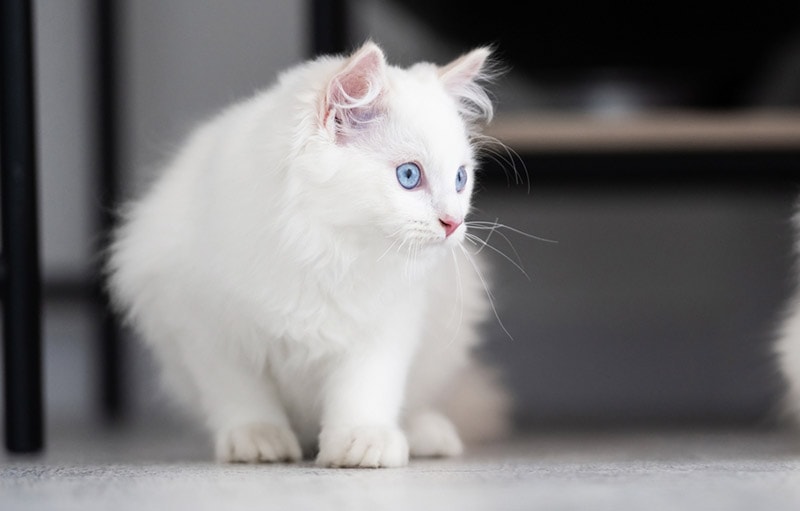
2. Pure White Cats Have Little or No Color
Most people think of white as a color, but the truth is that white is an (almost) complete lack of color. In effect, a white cat is uncolored because it has no melanin. The reason is the W gene that we discussed in fact #1. When a cat is born with the recessive W gene, its skin, fur, and eyes can be affected and have little or no color. Blue eyes? They aren’t blue at all because they have no pigment. What you see are colors being reflected off of the collagen fibers in your cat’s eyes.
3. A White Cat Can Get a Severe Sunburn
Most people, even those who’ve had cats for years, don’t realize that all cats can get sunburned if they stay in the sun too long. White cats, however, have the highest risk of sunburn because of their lack of melanin. That’s right, melanin not only determines a cat’s color but also protects a cat’s skin from the sun’s UV rays.
Without melanin, a white cat is at a very high risk of sunburn. Even worse, a cat can develop skin cancer if they get repeated sunburns (technically known as solar dermatitis). To prevent this tragedy, ensure your white cat doesn’t stay in the sun too long.
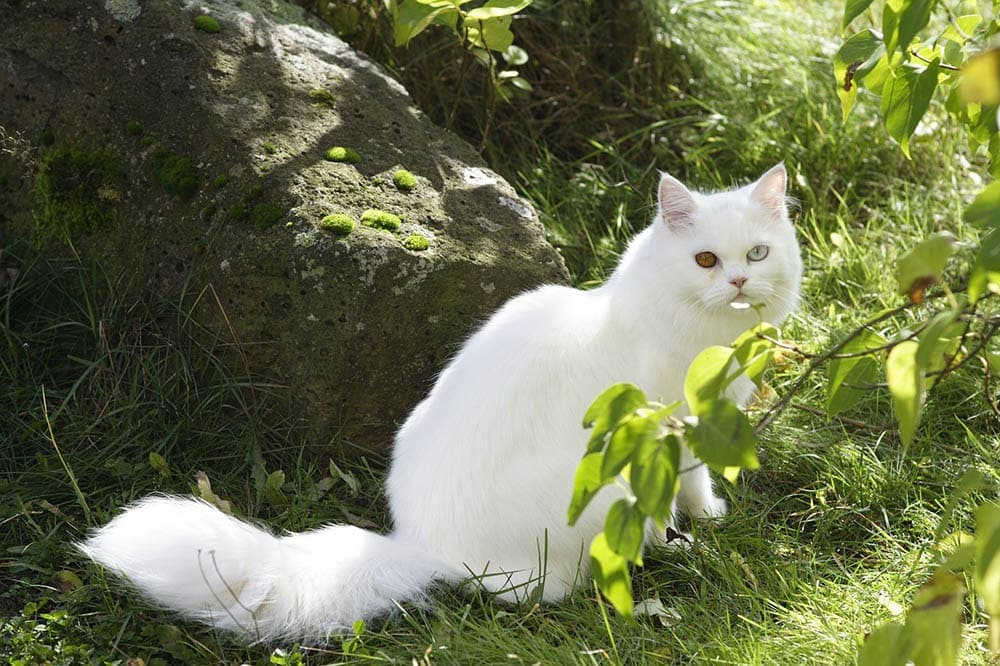
4. Pure White Is the Rarest Cat Color
According to Dr. Hannah Hart, DVM 1, only about 5% of cats have pure white coats. That’s because it takes a rare combination of the W gene handed down from the cat’s mother and father. In short, if you have a pure white cat, you have an exceptional cat that only accounts for 5% of the cat population.
5. Many Cultures Believe White Cats Bring Good Luck
Most people have heard the unfounded tales of black cats bringing bad luck. For example, who hasn’t heard that you shouldn’t let a black cat cross your path? However, the exact opposite is true with white cats, and many cultures believe they bring good luck. In fact, some cultures celebrate when a white cat crosses their path, and many go out of their way to adopt a white cat.
In Russia, it’s believed that owning a white cat will bring riches and wealth to your family. In ancient Egypt, white cats were considered sacred and were thought to be able to catch the glow of a beautiful sunset and shine it on their owner. One superstition in colonial America was that dreaming of a white cat meant you’d have good luck. It should be noted that many parts of Europe, even today, consider white cats bad luck.
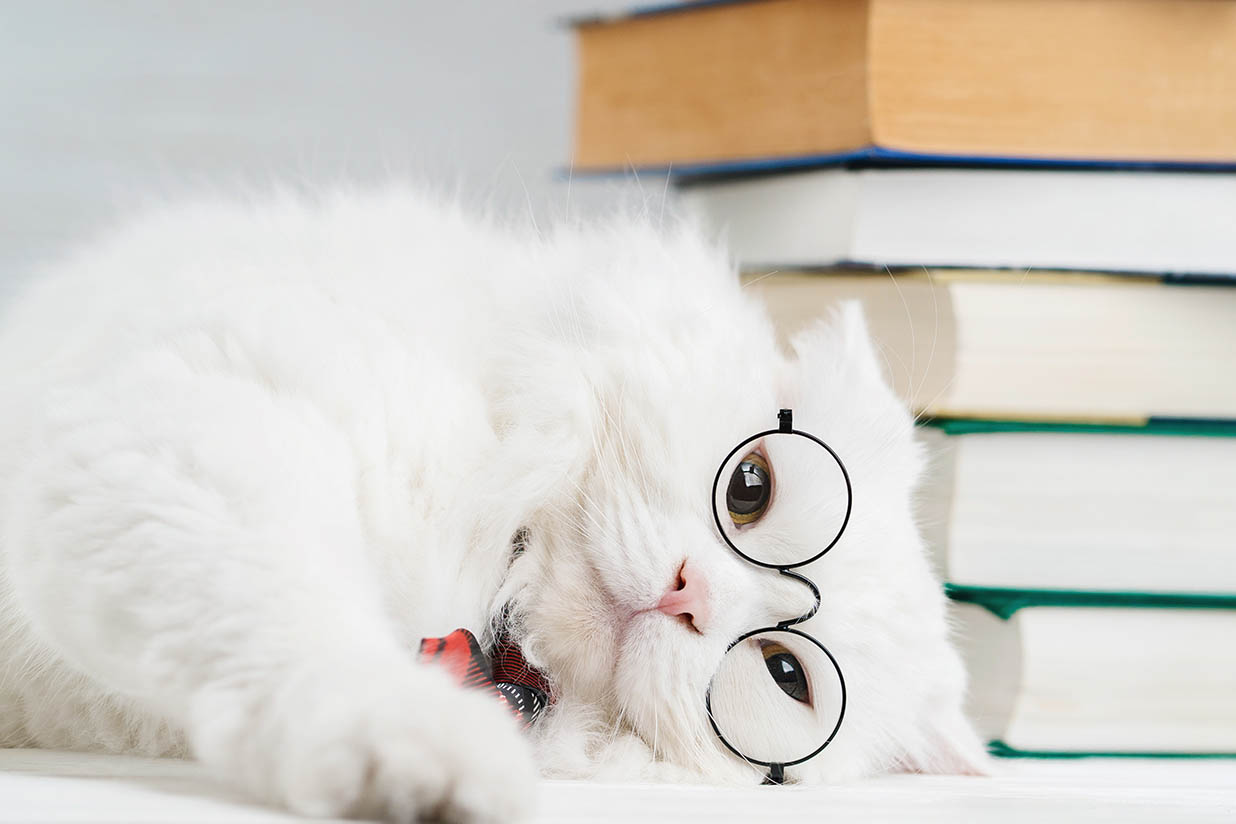
6. White Cats Have Been Featured in Many Movies and TV Shows
If you’re a big fan of the silver screen, you might have noticed that white cats are prevalent. The same can be said for TV shows, where white cats have been quite popular. A list of the most famous fictional white cats includes the following:
- Duchess and Marie from Disney’s The Aristocats
- Artemis from Sailor Moon
- Ernst Stavro Blofeld’s lap cat from the James Bond movies
- Hello Kitty
- The white cat from the movie The Mummy (1999)
- Sylvester James Pussycat, Sr. from Looney Tunes. (Technically, a tuxedo cat but mostly white)
7. A White Cat Is Not Always an Albino
Many people believe that white cats are albinos, but that’s not exactly true. Yes, all albino cats are white, but all white cats aren’t albinos. The difference, while subtle, lies in the amount of melanin the cat has. Albino cats completely lack melanin and have no color in their fur, eyes, or skin.
White cats typically have some melanin and a splash of color on their nose and paws. The two are further separated by the fact that the W gene causes a cat to be white, but a mutation of either the TYR or OCA2 genes causes a cat to be born albino. When these mutations occur, an albino cat has none of the enzymes necessary to produce melanin.
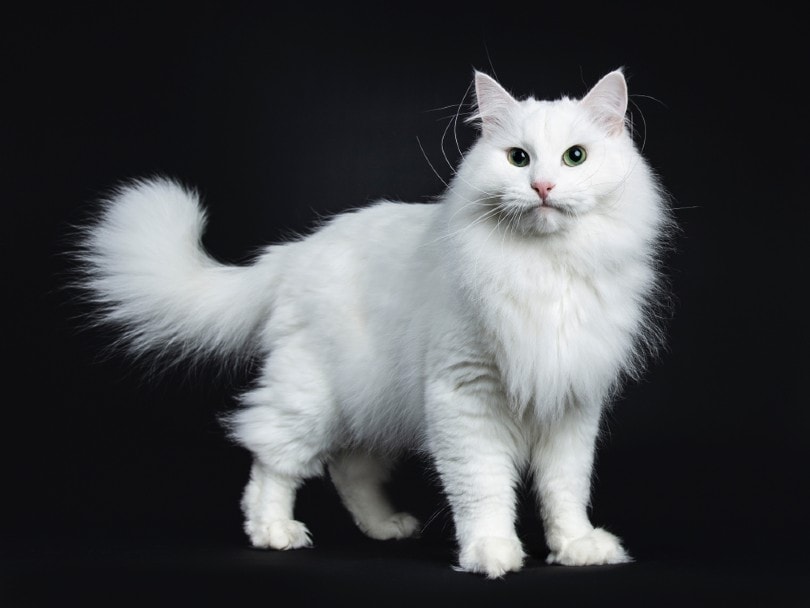
8. Many White Kittens Are Born with a Skullcap
A skullcap, as ominous as it sounds, is nothing more than a splash of color on the top of a kitten’s head. In white kittens, the skullcap is usually the color that the cat would have been if the W gene hadn’t blocked melanin production in its body. What’s truly fascinating is that the skullcap will usually disappear after a kitten sheds its baby coat. That means you should take plenty of pics of your kitten because, as an adult, that splendid splash of color on its head will be gone.
9. Many Cat Breeds Can be White
The W gene can affect any breed, and the resulting cat will be white. Cat coloring and breed are separate and distinct. Conversely, cats like the Persian and Turkish Angora, which are often depicted as white (and many are), also come in a wide range of other colors. Turkish Angoras, for example, can come in as many as 20 solid colors and several patterns.
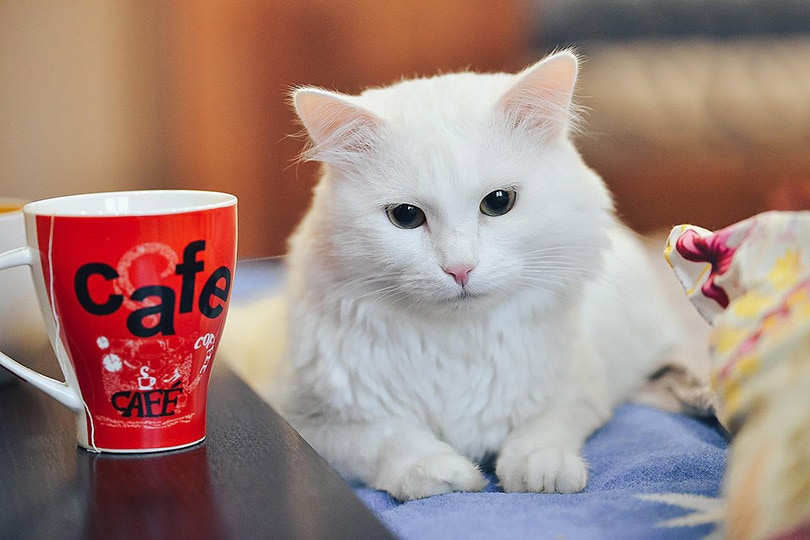
10. Deaf White Cats Have Helped Humans with Hearing Issues
You may be surprised to learn that deaf white cats make ideal subjects for studying how hearing loss can affect humans. Not only that, but the most successful device ever created to help humans with hearing loss, the cochlear implant, was a direct result of research involving deaf white cats!
It’s estimated that, in 2020, over a million people worldwide with hearing issues welcomed the benefits of cochlear implants thanks to the research done using deaf white cats.
11. Eye Color and Deafness Are Linked in White Cats
We’ve already seen that the lack of melanin caused by the W gene can also affect a cat’s eyes and hearing. What’s truly intriguing, though, is that eye color and deafness seem to be linked. For example, if a white cat has a blue (colorless) eye on the left side of its head, it will almost always be deaf on the left side also. A blue eye on its right side will inevitably mean that the cat is deaf on the right side.
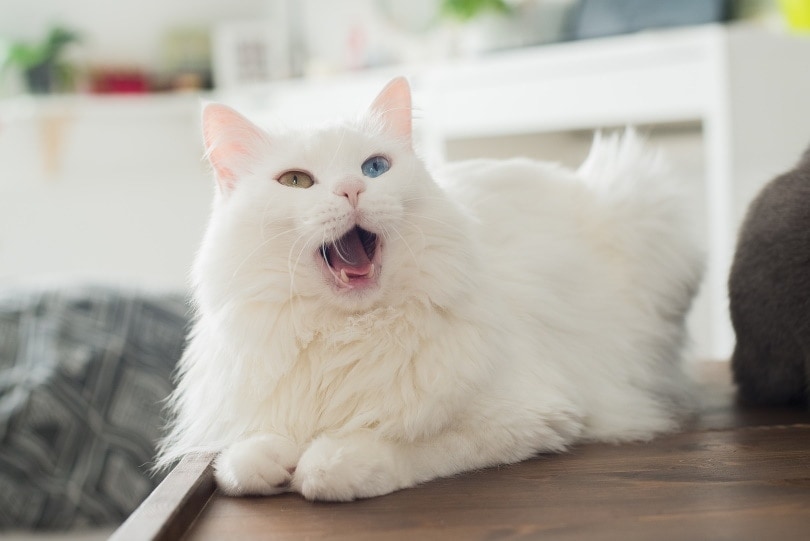
Conclusion
Did you enjoy this look at these incredible facts about white cats? We think you’ll agree that some of them were mind-blowing! If you’re like us, these facts have given you a new appreciation for your white cat and made them even more special in your heart and mind. As rare as they are, the occasional white cat will end up at a shelter.
If you’re keen on adopting one, volunteering at your local shelter is an excellent choice since you’ll be the first to know when a white cat shows up. Plus, you’ll get to help other cats and create a relationship with like-minded people!
Featured Image Credit: Sviatoslav_Shevchenko, Shutterstock

